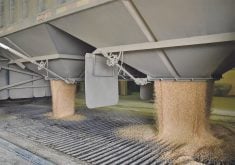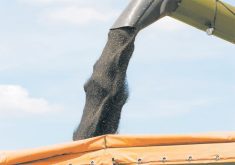Saskatchewan Crop Insurance Corp. is expected to announce program details for 2022 before the end of February. Given last year’s crop disaster and record high yield loss payments, producers are anxious to know what their coverage will look like for the year ahead.
Of most interest will be the price levels set for the various crops. An indication of prices for both the Saskatchewan and Alberta programs has come from the program announcement out of Manitoba.
Manitoba Agricultural Services Corp. uses the December price estimate from Agriculture Canada’s market analysis group to set crop insurance prices for the coming year.
Read Also

Invigor Gold variety viewed as threat to condiment mustard
Invigor Gold, the canola-quality mustard developed by BASF, is on a collision course with Canada’s condiment mustard industry. It’s difficult to see how the two can co-exist.
The Saskatchewan and Alberta programs use the January price estimate in the hope of a more accurate forecast for the year ahead.
While some variation may occur, Manitoba prices will likely be in the ballpark for those used in the neighbouring provinces. Red spring wheat is $9.53 a bushel, durum is $10.49, barley is $6.53, oats are $5.63, flax is set at $19.05, canola is $15.88 and field peas are $11.43.
Durum seems low given that new crop contracts in the $12 a bu. range have been available. The same is true for flax, where $24 a bu. for new crop has been readily available. Canola is also low as compared to new crop values.
If Saskatchewan’s prices are similar to Manitoba’s, producers with new crop contracts at higher values should consider using the contract price option whereby the amount of crop priced at a more favourable rate is factored into the crop insurance price offering.
If you’re really bullish about where prices are going, the in-season price option will be of interest. Rather than an estimate of prices months before the crop is even seeded, this option uses actual prices from September to February to determine the price used for crop insurance.
The in-season price option prices for 2021 will be announced in March and anyone with a crop insurance claim is likely to wish that they had picked this option back in the spring of 2021. With the amazing escalation in the marketplace, the in-season prices should be dramatically higher than regular crop insurance prices.
Unfortunately, very few producers used this option, partly due to a lack of awareness, but mainly because it’s a double-edged sword. In-season prices can also end up lower than crop insurance base prices. Plus, the option comes with a somewhat higher premium, irrespective of whether coverage increases or decreases.
Across the Prairies, crop insurance programs have paid out billions of dollars for 2021 losses with the highest payments in Saskatchewan. Without that support, thousands of farmers would be in a much tougher financial position right now. Knowing coverage levels for 2022 is prudent planning.
When crops are good and producers go numerous years without a crop insurance claim, it’s natural to discount the program’s importance. Some producers drop yield coverage from 80 percent down to 70, 60 or even 50 percent to cut premium costs. Many don’t evaluate opportunities such as the contract price option. Some drop out of the program altogether, believing they are unlikely to have a major crop failure.
A year like 2021 changes attitudes. So does the fact that soil moisture levels remain dreadfully low in many regions.
The program details for 2022 are anxiously awaited.
As usual, March 31 will be the deadline for Saskatchewan producers wanting to make changes in their coverage levels and pricing options.
Kevin Hursh is an agricultural journalist, consultant and farmer. He can be reached by e-mail at kevin@hursh.ca.


















